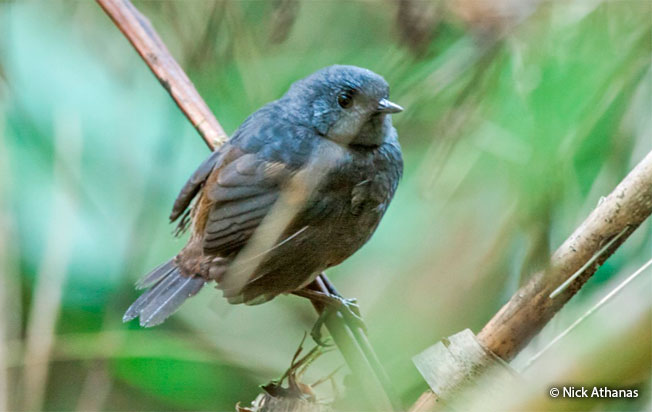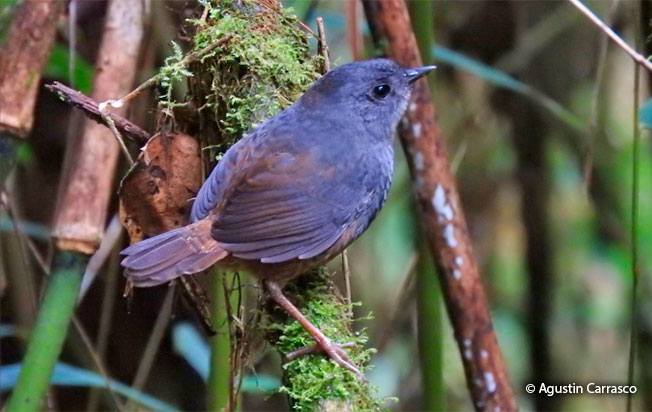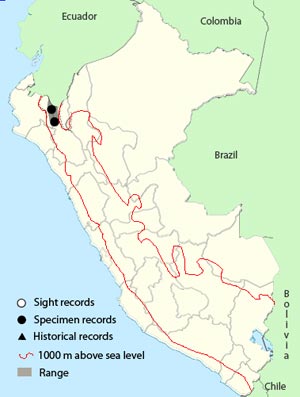Order: Passeriformes | Family: Rhinocryptidae | IUCN Status: Least Concern

Age: Adult | Sex: Unknown | Loc. Reserva Tapichalca Ecuador.

Age: Adult | Sex: Unknown | Loc. Saraguro, Ecuador, Macaulay Library ML712743

Age: Adult | Sex: Unknown | Loc. R. Tapichalaca, Ecuador, Macaulay Library ML114164841

Age: Adult | Sex: Unknown | Loc. R. Tapichalaca, Ecuador, Macaulay Library ML48810871
Status: The Chusquea Tapaculo is uncommon in montane forests in extreme northeast Peru at elevations ranging between 2200-2900 m. It also occurs in Ec.
Name in Spanish: Tapaculo de Chusquea.
Sub-species: Chusquea Tapaculo (Scytalopus parkeri), Krabbe and Schulenberg, 1997.
Meaning of Name: Scytalopus: Gr. skutale or skutalon= stick, cudgel and pous, podos= foot.
parkeri: In honor of Theodore ‘Ted’ Albert Parker III (1953-1993) US field ornithologist with unparalleled knowledge of Neotropical birds, tragically killed in an air crash.
 Voice
VoiceReferences:
-
- Species range based on: Schulenberg, T. S., D. F. Stotz, and L. Rico. 2006. Distribution maps of the birds of Peru, version 1.0. Environment, Culture & Conservation (ECCo). The Field Museum. http://fm2.fieldmuseum.org/uw_test/birdsofperu on 03/01/2017.